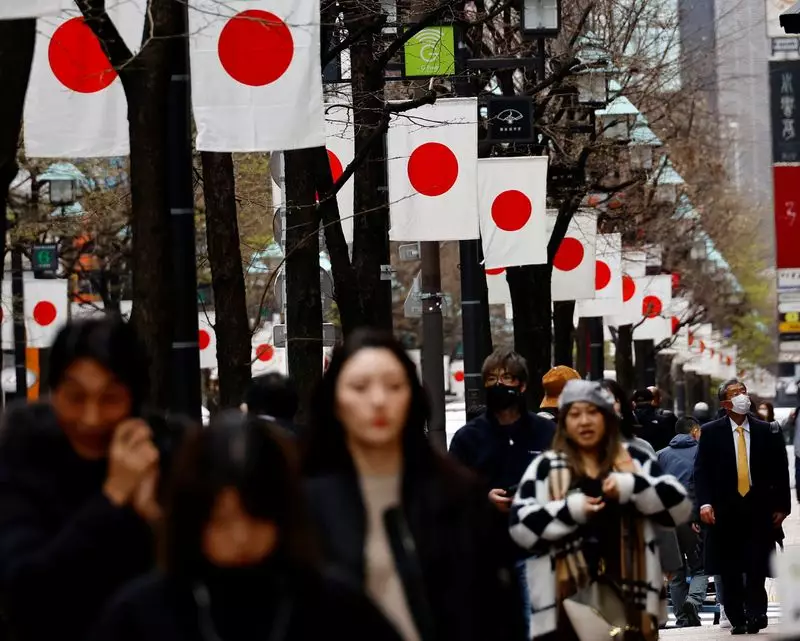In the latest quarterly survey conducted by the Bank of Japan, a nuanced portrait of the industrial landscape has emerged, highlighting both gradual optimism among major manufacturers and significant challenges facing the non-manufacturing sector. As companies grapple with rising costs and a tightening labor market, the implications for policy direction and economic growth remain critical topics of discussion.
The “tankan” survey indicates a slight uptick in sentiment among Japan’s large manufacturers, with the index climbing from +13 in September to +14 in December. This improvement aligns with positive market expectations, as analysts had predicted a more modest index of +12, marking the highest level of confidence observed since March 2022. The rise is attributed primarily to a rebound in auto production alongside robust demand for capital equipment, signaling that manufacturers are investing in their operational capabilities despite an increasingly complex global economic environment.
Chief economist Saisuke Sakai from Mizuho Research & Technologies notes that the resilience displayed by manufacturers is particularly noteworthy given external pressure from China’s economic slowdown. This suggests that domestic companies are adapting to external headwinds, which can be seen as a promising sign for both the Bank of Japan and the nation’s overall economic trajectory.
Conversely, the sentiment among non-manufacturers is less favorable, as indicated by a marked decline in confidence among retailers, hotels, and restaurants. These sectors express heightened concern over labor shortages and climbing costs of raw materials, which have curbed economic vigor. Kazutaka Maeda, an economist at Meiji Yasuda Research Institute, remarks that although inbound tourism remains a positive driver, there are signs that household spending might be slowing down as consumers become more cautious in their spending habits.
Investors and policymakers should closely monitor these shifting dynamics in sentiment, as they are pivotal indicators of future consumption trends, a key pillar for sustainable economic growth.
Despite the pessimism prevalent in some sectors, large companies are signaling an intent to ramp up capital expenditures, expecting an 11.3% increase in the fiscal year ending March 2024. This expectation surpasses prior estimates, showcasing an underlying confidence that might bode well for long-term economic health and job creation if executed successfully. This is particularly evident in an environment where small non-manufacturers are reporting the highest sentiment levels since 1991, propelled by swiftly rising profits that can potentially endorse further investment and spending.
However, this growth could stall if inflationary pressures persist. The survey reflects a sentiment that inflation may remain above the Bank of Japan’s 2% target for the foreseeable future, intensifying scrutiny on the central bank’s policies. Companies are increasingly eyeing the sustainability of their price hikes against the backdrop of tight labor markets and global uncertainties, particularly with the potential for tariff changes under incoming U.S. leadership.
Following the recent policy adjustments—including the end of negative interest rates and a modest rate hike—the Bank of Japan will likely be cautious in its next moves. Despite encouraging signs from increased capital expenditures and optimism in the manufacturing sector, the Bank’s officials recognize the need to fully assess overseas risks, notably those associated with U.S. economic policies.
The Bank of Japan’s Governor, Kazuo Ueda, has articulated a commitment to continuing rate hikes if businesses persist in increasing prices and wages, which consequently reflects broader market confidence. However, with the mood dampening among sectors dependent on consumer spending, the central bank faces a balancing act to foster growth without overstimulating the economy and potentially aggravating inflation.
Overall, while the report indicates a cautious optimism prevailing among large manufacturers, the challenges faced by non-manufacturers underscore the complexities of Japan’s current economic situation. Policymakers must tread carefully to navigate the tumultuous waters marked by labor shortages, fluctuating demand, and external pressures resulting from geopolitical shifts.
As Japan continues its pursuit of sustained economic growth and price stability, close examinations of both manufacturing and non-manufacturing trends will be essential. Ultimately, the interplay of domestic confidence and global economic dynamics will shape the country’s economic landscape as it moves forward into 2024 and beyond.

